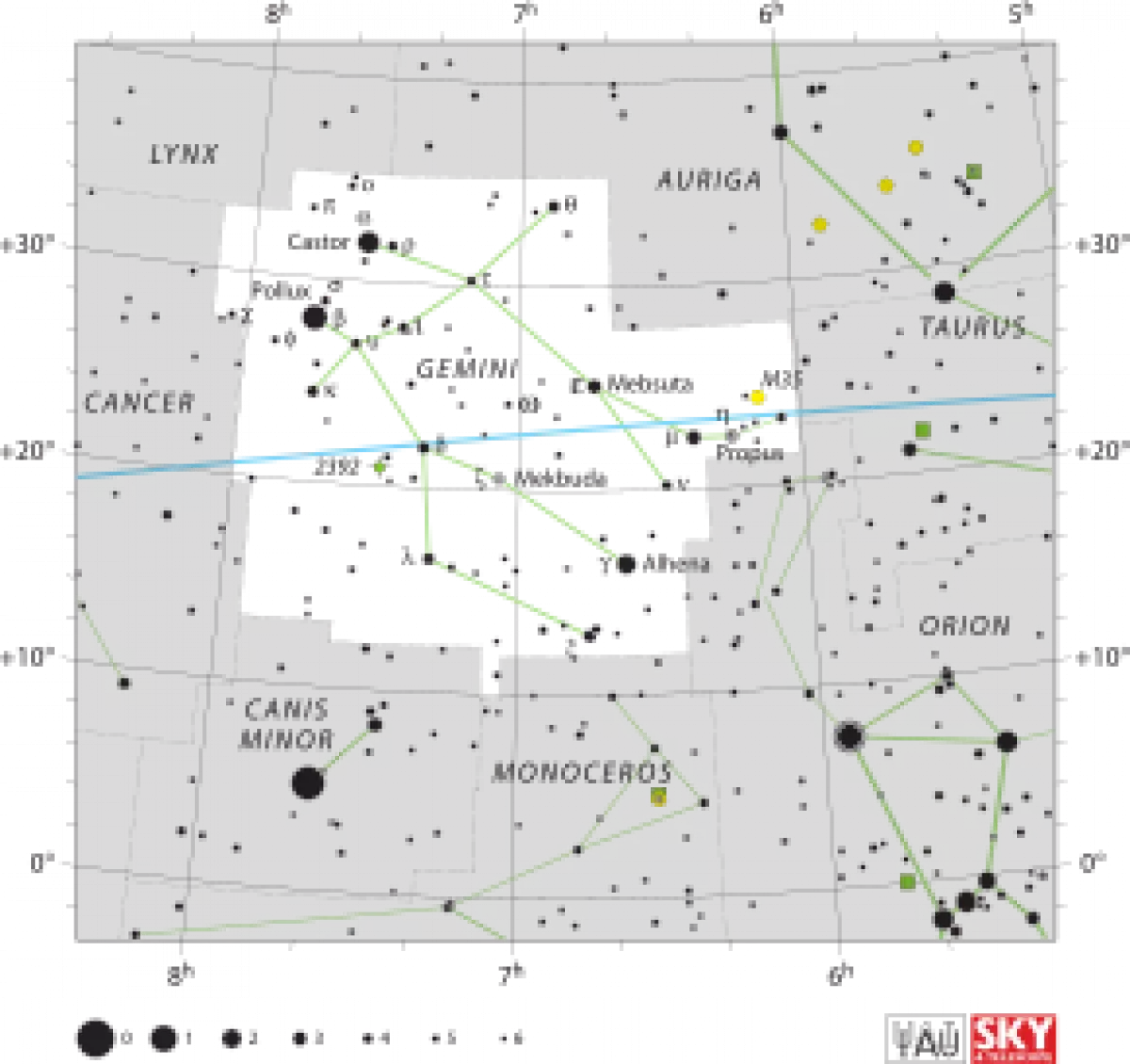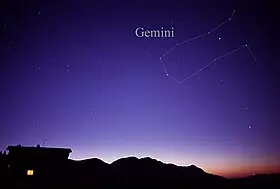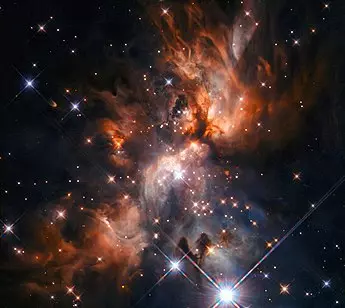Gemini, one of the constellations of the zodiac, has captivated stargazers for centuries with its celestial beauty. In this article, we will delve into the wonders of Gemini, uncovering its mythology, exploring its features, and revealing fascinating facts about this enchanting constellation.
Unveiling Gemini: The Twins of the Night Sky
Gemini, derived from the Latin word for "twins," is associated with the mythological twins Castor and Pollux from Greek mythology. These twins, immortalized in the stars, are said to be the sons of Zeus and Leda. Gemini is one of the 88 modern constellations, described by the 2nd century AD astronomer Ptolemy, and has remained a prominent feature of the night sky ever since.
 Gemini Constellation
Gemini Constellation
Journey through Gemini's Location
Gemini lies nestled between Taurus to the west and Cancer to the east. It shares borders with Auriga and Lynx to the north, Monoceros and Canis Minor to the south, and Orion to the southwest. In classical antiquity, Gemini marked the location of the Sun on the northern solstice, but due to axial precession, the Sun now resides in Taurus during this time. During winter in the northern hemisphere, Gemini graces the night sky, best observed throughout December and January.
The Stars of Gemini
Gemini boasts a dazzling array of stars, with 85 visible to the naked eye. Among them, Castor and Pollux shine the brightest. Castor, known as α Gem, is a sextuple star system located 52 light-years from Earth. Its blue-white appearance makes it easily recognizable. On the other hand, Pollux, identified as β Gem, is an orange-hued giant star situated 34 light-years from our planet. A fascinating fact is that Pollux has an extrasolar planet orbiting it, adding to the allure of this celestial duo.
 The constellation Gemini as seen with the unaided eye
The constellation Gemini as seen with the unaided eye
Other notable stars in Gemini include Alhena (γ Gem), Wasat (δ Gem), Mebsuta (ε Gem), Mekbuda (ζ Gem), and Propus (η Gem), each offering its own unique characteristics and allure to the constellation.
Deep-Sky Treasures in Gemini
Gemini is not just home to mesmerizing stars; it also harbors captivating deep-sky objects. One such object is the open cluster M35 (NGC 2168). Spanning approximately the same size as the full moon, M35 is a breathtaking sight and can even be seen with the unaided eye under dark skies. Another notable open cluster is NGC 2158, which appears rich and vibrant in larger amateur telescopes. Additionally, the planetary nebula NGC 2392, known as the "Eskimo Nebula," showcases a distinctive blue-green elliptical disk.
 Medusa Nebula, one of the deep-sky objects in Gemini
Medusa Nebula, one of the deep-sky objects in Gemini
Meteor Showers: Celestial Fireworks in Gemini
Gemini is a cosmic stage for meteor showers, particularly the Geminids. This spectacular display of shooting stars peaks on December 13-14, offering a breathtaking sight of approximately 100 meteors per hour. Another meteor shower associated with Gemini is the Epsilon Geminids, which overlap with the Orionids and feature higher velocities.
Mythology: The Story of Castor and Pollux
Gemini's captivating mythology revolves around the tale of Castor and Pollux. These twins, prominent figures in Greek mythology, were the offspring of Zeus and Leda. Castor was mortal, while Pollux was immortal. When Castor died, Pollux pleaded with Zeus to grant his brother immortality. Zeus obliged, uniting them in the heavens as the Gemini constellation. In Babylonian astronomy, these twins were known as the Great Twins and symbolized minor gods associated with the Underworld.
Visualizing Gemini: Twins in the Sky
Gemini's formation brings to mind the image of celestial twins. Castor and Pollux, the brightest stars in the constellation, appear relatively close together, resembling a joined "o" shape. As we traverse the night sky, we can envision the other stars in Gemini as two parallel lines descending from the main stars, creating a captivating image of two figures.
Fascinating Astronomical Connections
Gemini has witnessed significant astronomical events throughout history. Aristotle, in his work Meteorologica, made one of the earliest known observations of Jupiter occulting a star in Gemini. This observation took place on December 5, 337 BC. Additionally, William Herschel discovered Uranus in close proximity to η Gem, while Clyde Tombaugh discovered Pluto in 1930 while focusing on δ Gem.
Gemini's Cultural Significance
In Chinese astronomy, Gemini's stars are linked to two areas: the White Tiger of the West (Xī Fāng Bái Hǔ) and the Vermillion Bird of the South (Nán Fāng Zhū Què). Furthermore, in various cultures, the twin symbolism of Gemini extends beyond the physical to represent a spiritual or dual self that resides within.
Exploring Gemini in Astrology
Astrologically, Gemini spans from May 22 to June 21 in tropical astrology, and from June 16 to July 16 in sidereal astrology. As the Sun appears in this constellation, it is believed to influence the personality traits and characteristics of individuals born within its celestial embrace.
Gemini, with its captivating mythology, mesmerizing stars, and celestial wonders, continues to enchant and inspire stargazers worldwide. Whether observing its brilliant stars or tracing the lines that form the celestial twins, Gemini invites us to gaze at the heavens and ponder the mysteries of the universe.











